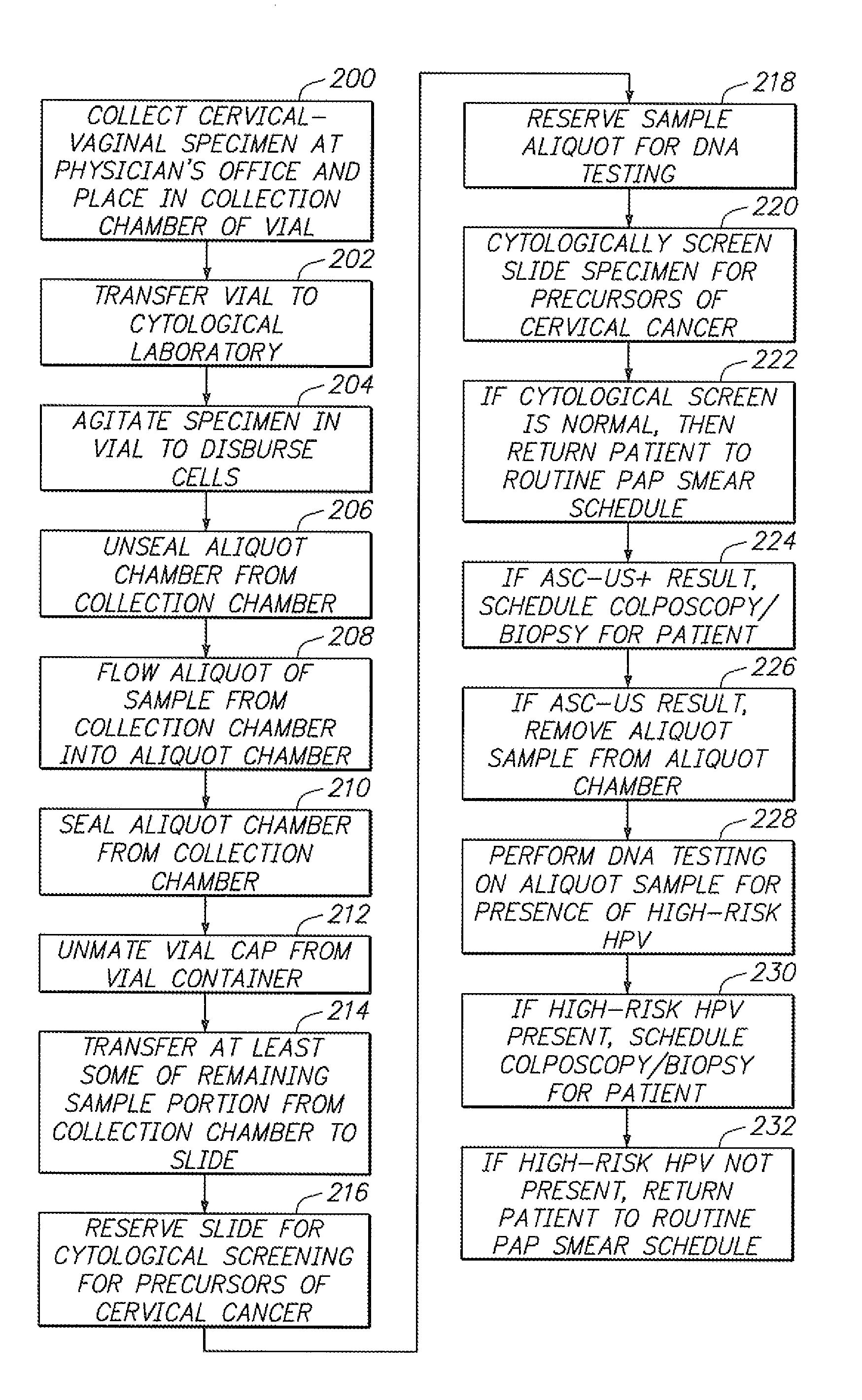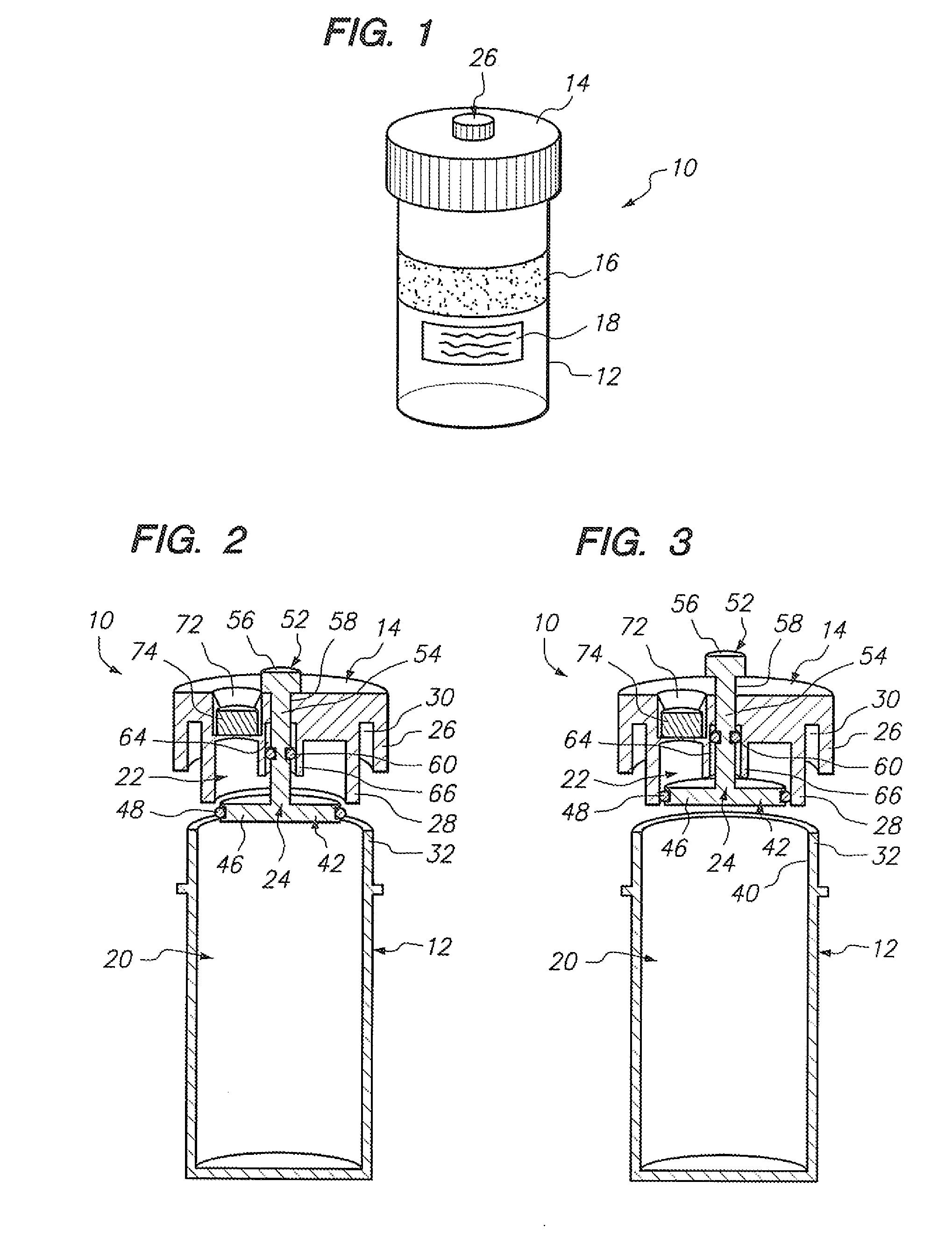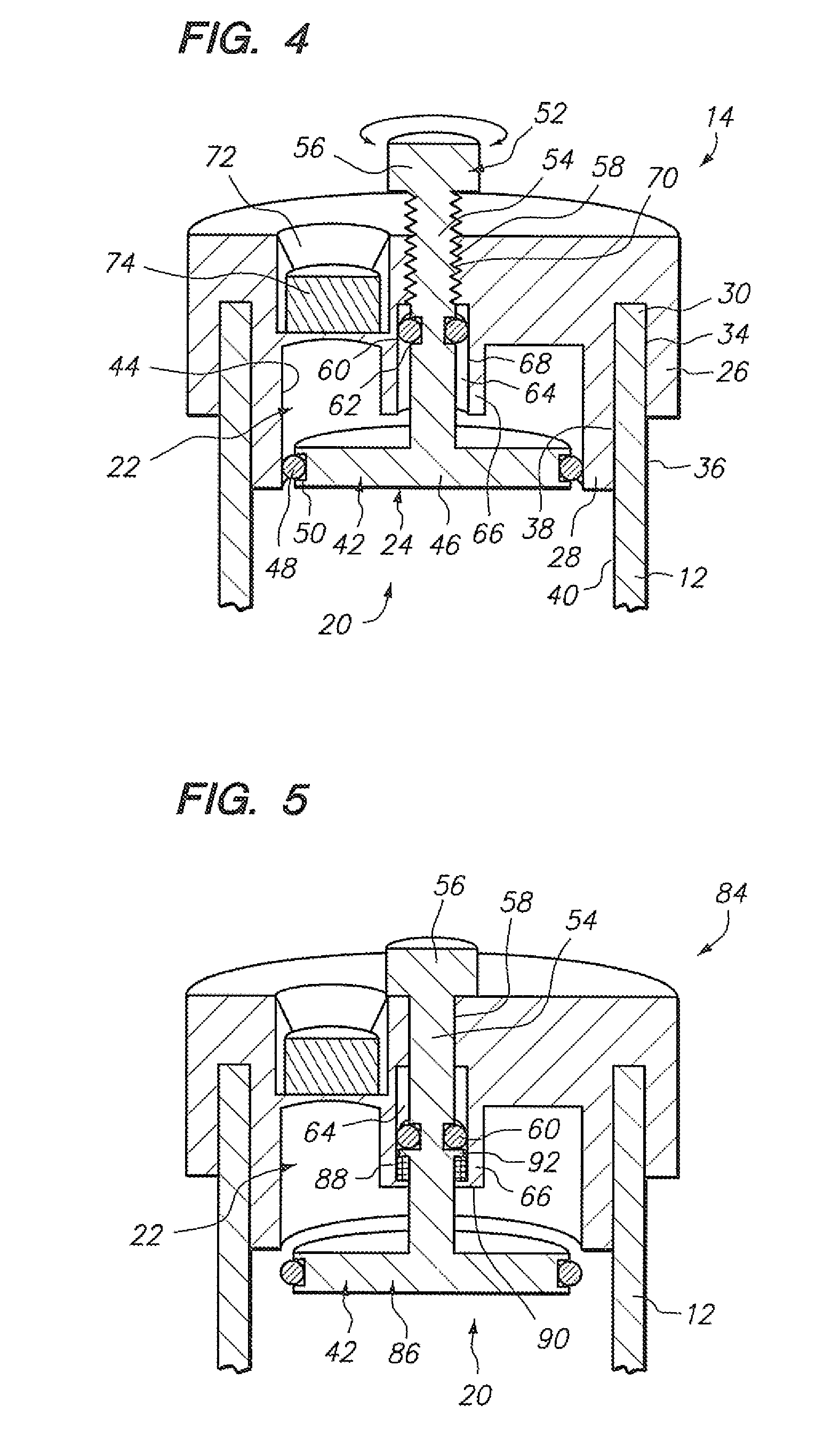Method and apparatus for obtaining aliquot from liquid-based cytological sample
a liquid-based cytological sample and aliquot technology, applied in diagnostic recording/measuring, laboratory glassware, instruments, etc., can solve the problems of molecular contamination, molecular contamination problems, and laboratory weary of molecular contamination of hpv dna tests
- Summary
- Abstract
- Description
- Claims
- Application Information
AI Technical Summary
Benefits of technology
Problems solved by technology
Method used
Image
Examples
Embodiment Construction
[0037] Referring to FIG. 1, a sample vial 10 constructed in accordance with one embodiment of the present invention will be described. The vial 10 may be used to contain a fluid-based sample, such as a cervical-vaginal sample collected from a patient at a physician's office. The fluid-based sample typically comprises cytological material suspended in an aqueous preservative fluid.
[0038] To this end, the vial 10 comprises a hollow vial container 12 and a vial cap 14 that can be placed onto the vial container 12 to enclose a sample contained within the vial container 12. As depicted, the vial container 12 and vial cap 14 are generally cylindrical in shape. The selected size of the vial container 12 and vial cap 14 may vary, but preferably is large enough to contain the minimum amount of sample necessary to perform the intended diagnostic test. In the illustrated embodiment, the vial container 12 is capable of containing at least 20 ml of fluid, which is the minimum amount of sample r...
PUM
| Property | Measurement | Unit |
|---|---|---|
| deoxynucleic acid | aaaaa | aaaaa |
| structure | aaaaa | aaaaa |
| area | aaaaa | aaaaa |
Abstract
Description
Claims
Application Information
 Login to View More
Login to View More - R&D
- Intellectual Property
- Life Sciences
- Materials
- Tech Scout
- Unparalleled Data Quality
- Higher Quality Content
- 60% Fewer Hallucinations
Browse by: Latest US Patents, China's latest patents, Technical Efficacy Thesaurus, Application Domain, Technology Topic, Popular Technical Reports.
© 2025 PatSnap. All rights reserved.Legal|Privacy policy|Modern Slavery Act Transparency Statement|Sitemap|About US| Contact US: help@patsnap.com



